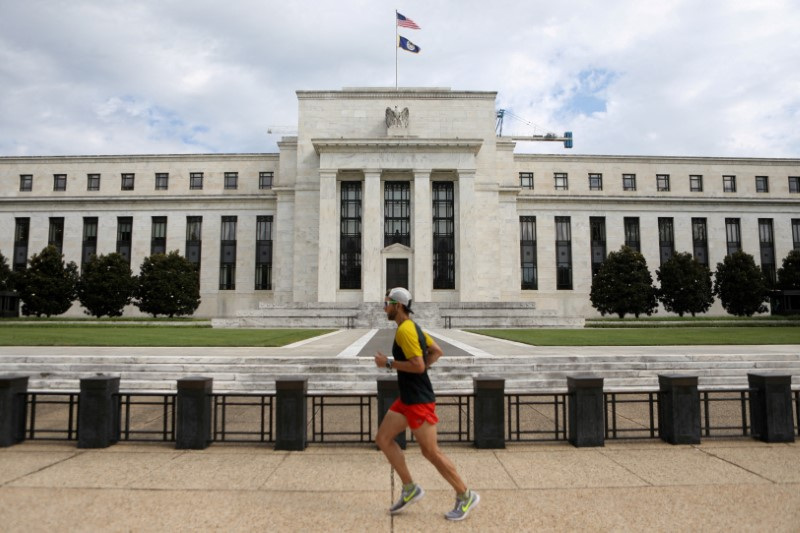(Reuters) -The U.S. central financial institution held its benchmark in a single day rate of interest regular within the 5.25%-5.50% vary on the conclusion of its July 30-31 coverage assembly, however since then Federal Reserve Chair Jerome Powell has declared “the time has come for policy to adjust,” signaling that price cuts are prone to start on the Sept. 17-18 assembly.
Simply what dimension of a discount – 25 foundation factors or 50 – will hinge on knowledge between every now and then.
Among the many key statistics the U.S. central financial institution is watching:
INFLATION (PCE launched Aug. 30; CPI launched Aug. 14; CPI launch Sept. 11):
The non-public consumption expenditures value index the Fed makes use of to set its 2% inflation goal got here in barely softer than forecast in July, with an annual enhance of two.5%, the identical as in June. The core index excluding meals and power prices was additionally barely decrease than forecast at 2.6%, additionally unchanged from the month earlier than.
However it’s the month-on-month charges beginning in April that underpin Fed officers’ rising confidence that inflation is on its approach again to the goal in a sustainable vogue, permitting them to show their focus to defending the job market.
The headline month-to-month price in July was 0.2%, as was the core price. Since April, when readings softened after a bump up within the first quarter of the yr, the unrounded headline price has averaged 0.12% and the core has averaged 0.17%, each of which annualize primarily to charges at or simply under the Fed’s goal.
“With inflation on track to moderate back to the 2% target, the Fed is more free to focus on the health of the economy,” Michael Pearce, deputy chief U.S. economist at Oxford Economics, wrote in a observe.
EMPLOYMENT (Launched Aug. 2; subsequent launch Sept. 6):
U.S. corporations added an underwhelming 114,000 jobs in July, and revisions to the prior two months knocked 29,000 positions from the beforehand estimated variety of payroll jobs. That pushed the three-month common complete payroll progress right down to 170,000, under the extent typical earlier than the COVID-19 pandemic.
The unemployment price additionally rose to 4.3%, which may heighten fears that the labor market is deteriorating and doubtlessly making the economic system weak to a recession.
The variety of folks in a job or on the lookout for work grew. Authorities knowledge in late July confirmed the slowing of the labor market is being pushed by low hiring, reasonably than layoffs, with hires dropping to a four-year low in June.
Common hourly wages rose 3.6% in July in comparison with a yr in the past, versus a 3.8% annual enhance in June. The Fed usually considers wage progress within the vary of three.0%-3.5% as in keeping with its 2% inflation goal.
JOB OPENINGS (Launched July 30; subsequent launch Sept. 4):
In an indication of the job market’s continued resilience, the extent of job openings remained above 8 million in June, whereas the variety of open jobs out there for every unemployed particular person fell barely to 1.2, remaining roughly the place it was within the years earlier than the pandemic.

Powell has saved a detailed eye on the U.S. Labor Division’s Job Openings and Labor Turnover Survey (JOLTS) for data on the imbalance between labor provide and demand, and the pandemic-era soar to greater than 2 to 1 within the variety of open jobs for every out there employee was emblematic of the time.
Issues have cooled considerably. Different points of the survey, just like the quits price, now right down to 2.1, have edged again to pre-pandemic ranges in what Fed officers view as an rising stability between the provision and demand for employees. Whereas the hiring price has slowed, for instance, the layoff price has remained secure in an indication that firms are holding on to their employees.




